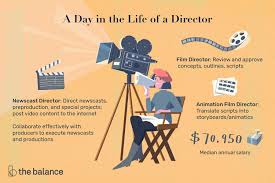Lessons on Leadership from Great Filmmakers
Each successful film has a beginning – a vision, a story waiting for a voice to tell it and the team that can bring it to reality. Every cinematic masterpiece is based on a director who guides and inspires various talents, as well as coordinating their efforts. The art of being a great director is similar in some ways to that of a good executive. Leaders who have the greatest impact, just like directors of great films, know that success is seldom a one-man show. Instead, it’s often a team effort wrought through collaboration, trust and creativity.
Bardya Ziaian embodies what it means to be an accomplished executive in the world of films and filmmaking, blending creative vision with strategic leadership to turn powerful stories into cinematic success.
The right casting can either make or break the movie for a filmmaker. In the same way, the first leadership act for an executive involves choosing the correct people to play the roles. Hiring the biggest names is not the goal, but finding people that align with an organization’s values and vision. True leaders nurture talent and let it shine, enhancing the production. As directors inspire authentic performances in their actors, leaders bring out the best from their teams by inspiring them with confidence and creating a culture where they can all thrive.
Each department, from costume design to lighting, contributes to a final film. Filmmakers must understand that all roles are vital and respect them. This principle also applies in leadership. Successive executives recognize the importance of all team members, regardless of whether they are managing finances, creating products or interacting with clients. The best leaders do not micromanage. Instead, they trust in their staff’s knowledge and expertise. This creates a culture of collaboration.
Filmmaking is all about adaptability. When scripts and conditions change or unexpected obstacles arise, the production must still go on. Executives who are successful embody resilience. Leaders know leadership doesn’t mean rigid control, but rather guiding your team with composure and creativity through a change. Instead of panicking, they take a different approach when they encounter obstacles. Find new angles to work with, or rewrite a scene, as needed. Keep the production going.
It is the vision that separates legendary executives from good ones. The best leaders think about the impact the story will have on the audience, the legacy it leaves, and how to use that power. This vision is clearly communicated to ensure that every member of the team understands his or her role in the big picture. They perform more passionately and with purpose when people are connected to something greater than themselves.
On the whole, all of us share the same goal as filmmakers or executives: creating something that has meaning and resonates. A film that captures the attention of audiences and a company that is capable of transforming lives both demand courage, creativity and the ability for talented people to work together under a single inspiring vision.
Like a filmmaker who has mastered the art of filmmaking, an accomplished executive doesn’t simply chase success; they build it scene by scene through their people. It is not just about a flourishing company. The end result will be a collaboration of innovation, lasting impact, and collaboration.

